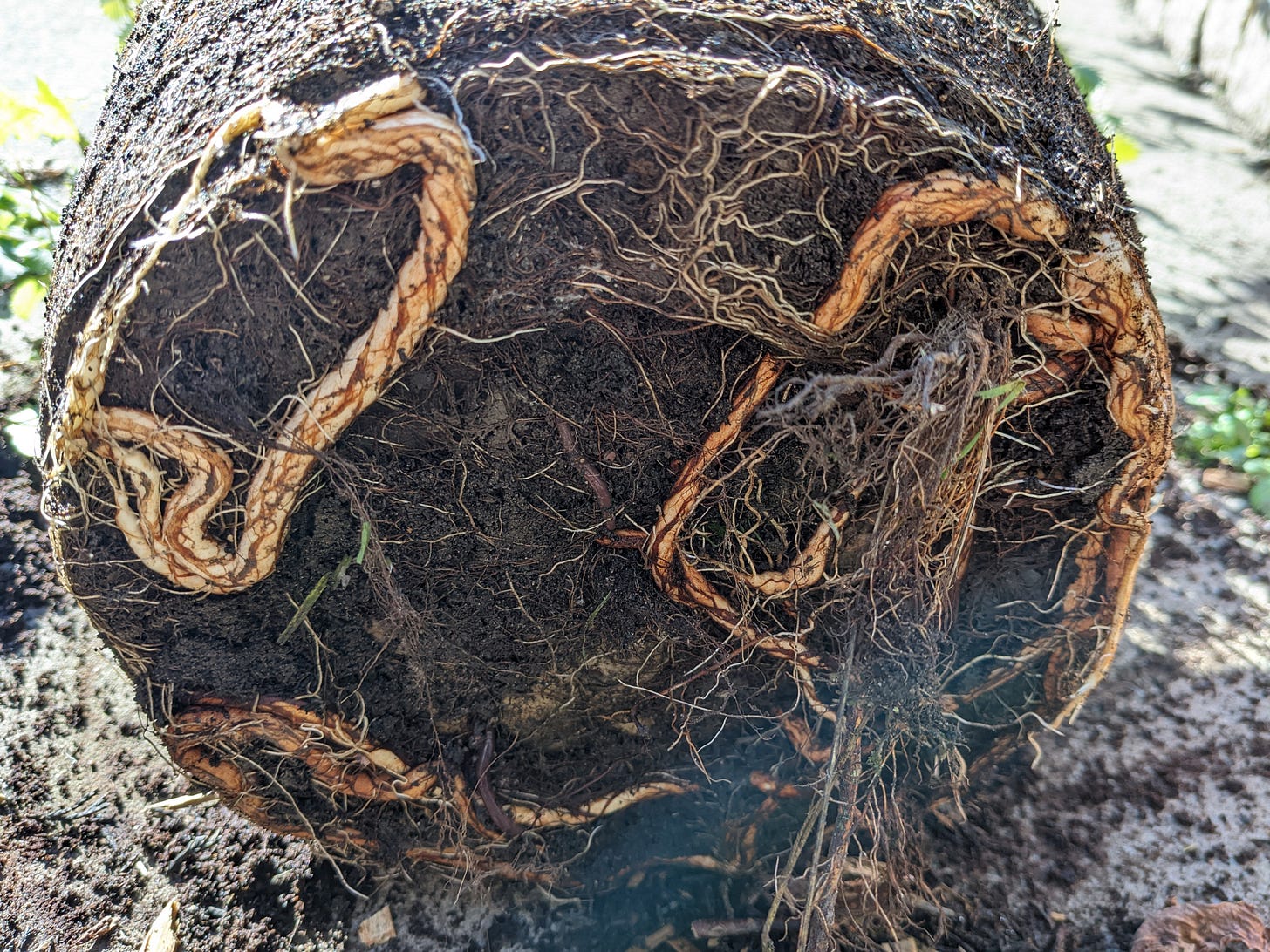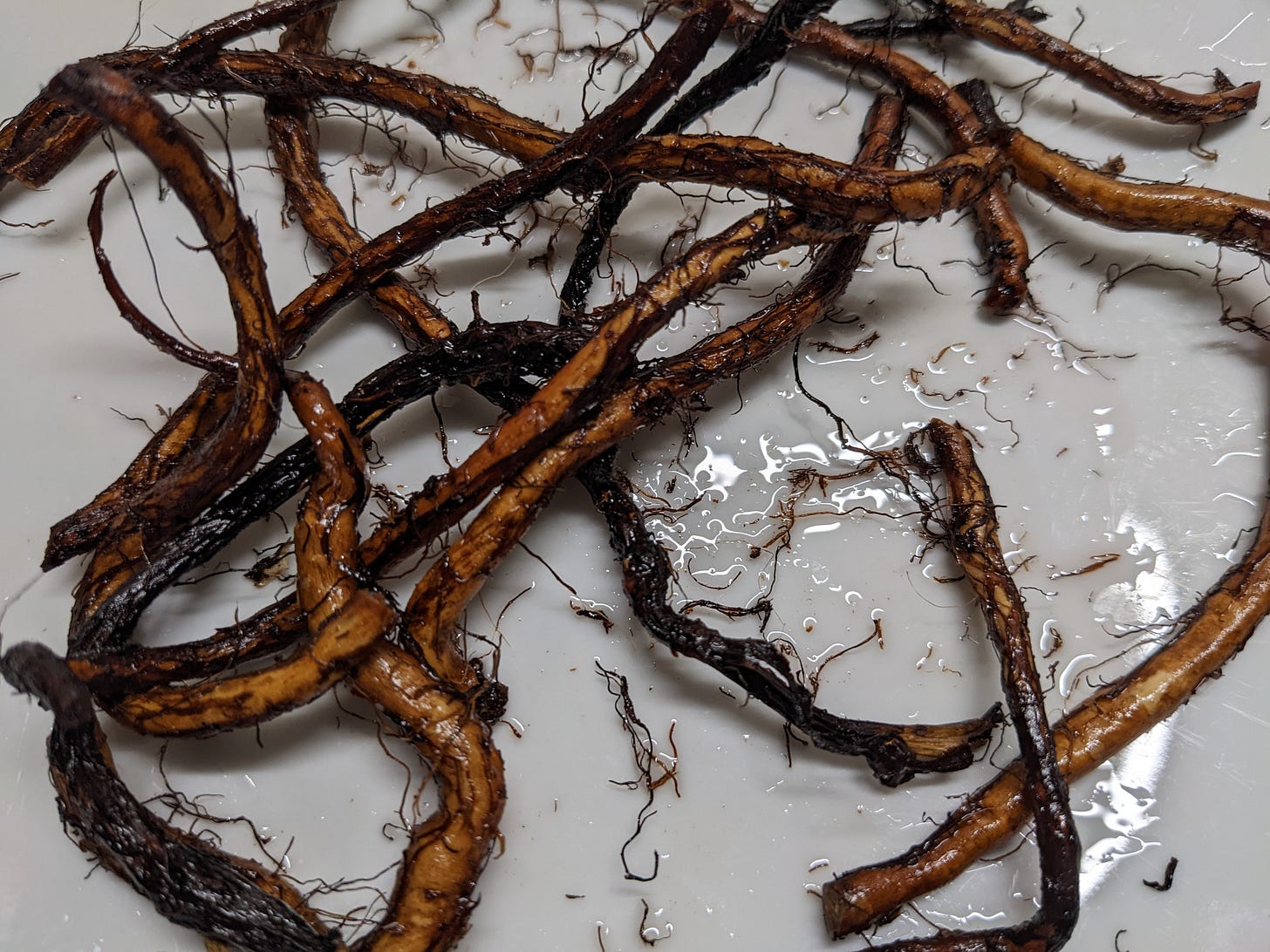For convenience, here is an index of my Silverweed related content.
Whilst waiting for my nascent second generation silverweed to mature - and by the way, one of the drawbacks of working with silverweed is that it takes two years for a seedling to flower - I thought it would be fun to do recap some culinary experiments.
I’m not a complete stranger to cooking silverweed. Last autumn, I harvested more than a dozen pots, kept the most promising candidates and cooked the rest.

Gathering and preparation
If you think you can just wander over to a random patch of wild Argentina anserina and casually harvest a decent meal, you’re dreaming same dream as me and I encourage you to join my domestication efforts.
The truth is, silverweed roots extend far below ground and if your local patch is anything like mine, you’ll be hard pressed to harvest one kilogram in as many hours. The soil will be rocky and dense and you’ll have a jolly time teasing out the edible roots from the neighbouring plants.
One obvious way of solving your harvesting woes is to use pots, but these are not the panacea they might seem as they can dry out in high summer and become root-bound. A few of my specimens punched straight through the drainage holes and have now propagated themselves into my forest garden patch.
Tip the pots out if you’re growing in pots, but however you’ve obtained your specimens, use a hose to do a preliminary washing off of soil clumps and debris.
What you shouldn’t do is clump the roots together, like I did.
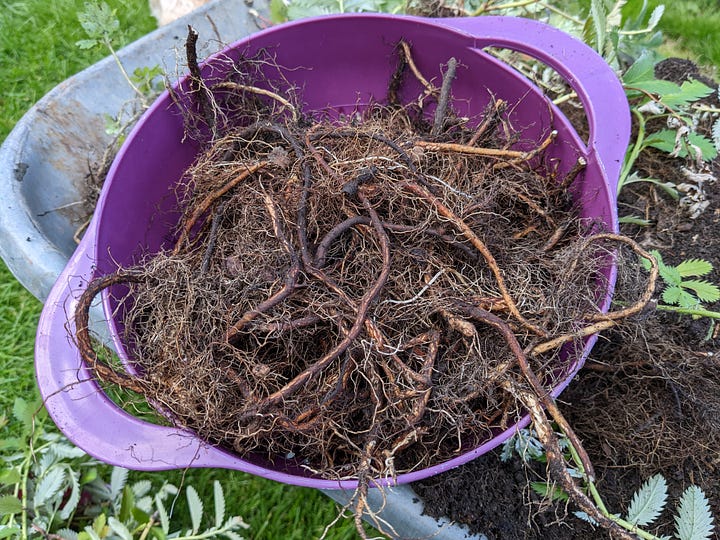
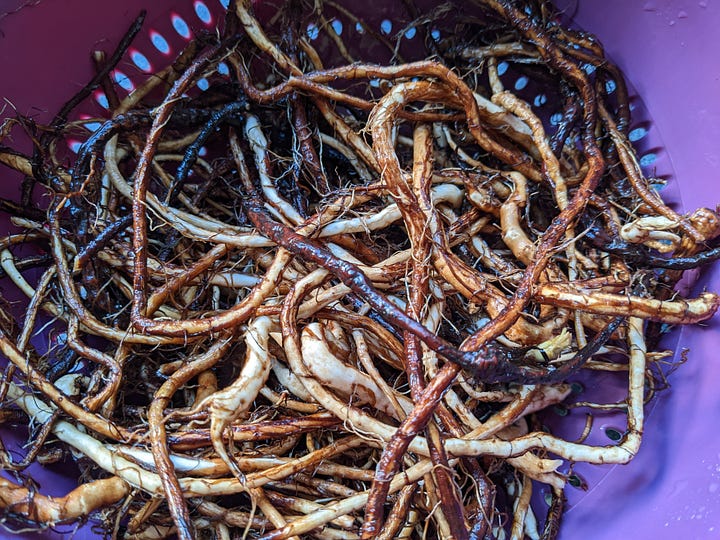
I gained a very real reason for wanting to domesticate this underrated root - the fine hairs that branch off the storage roots really stick to the soil grains. It’s possible to pull off the hair-like roots, and I would advise you to as much as possible because they tend to char when cooking as they’re so small.
Once washed so that the water came away clear, I cooked the roots three ways: boiling, roasting and frying.
Frying
In terms of maximum taste and minimum effort, frying wins hands down - just a few minutes in some oil is all you need and you come away with what I would describe as a crunchy, starchy bar snack that is a cross between potato and nuts. I didn’t flavour it, but it should carry herbs, salt, seasoning and various dips like chilli very well. Just watch out you don’t burn the roots, they cook quickly because of their thinness. I can imagine it going well in stir fries with a rich sauce.
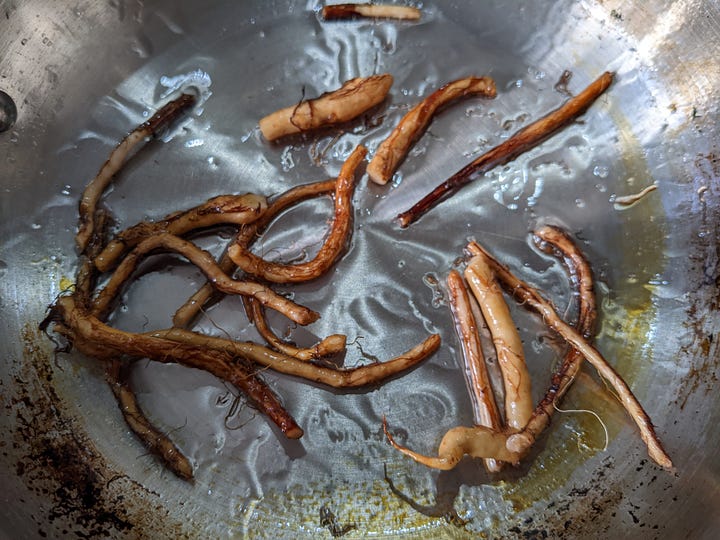
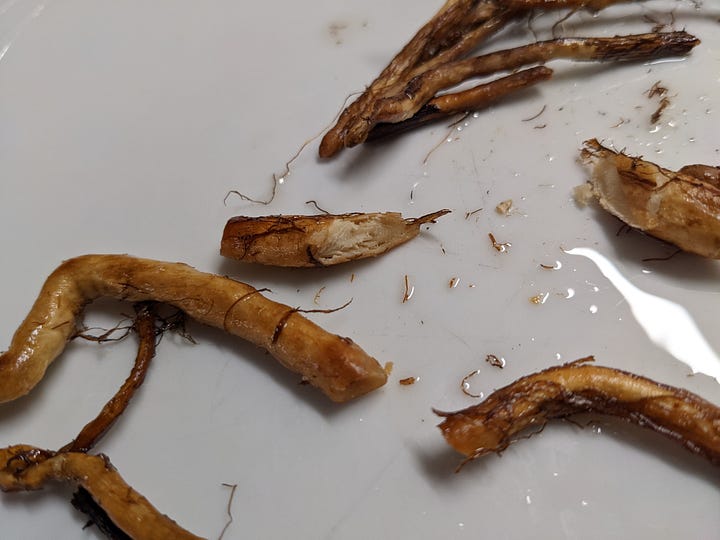
Boiling
Boiling the roots for ten minutes or so will get you a nutty potato-like texture which you can turn to a root mash, like mash potato but with a few more fibres. I’m sure this will carry off the typical mash potato seasoning. I would guess that you lose a lot of nutrients in the water which you could probably harness in a soup. If I ever manage to improve tuber size, the mash texture will greatly improve the fibrous outside can be peeled away.
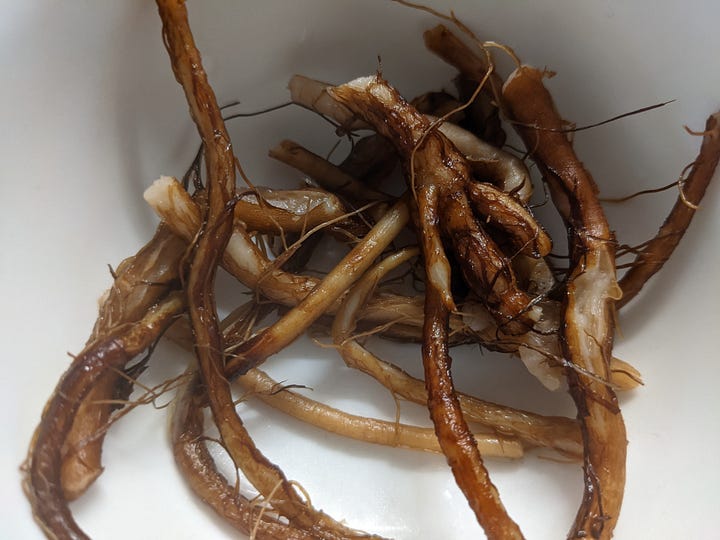
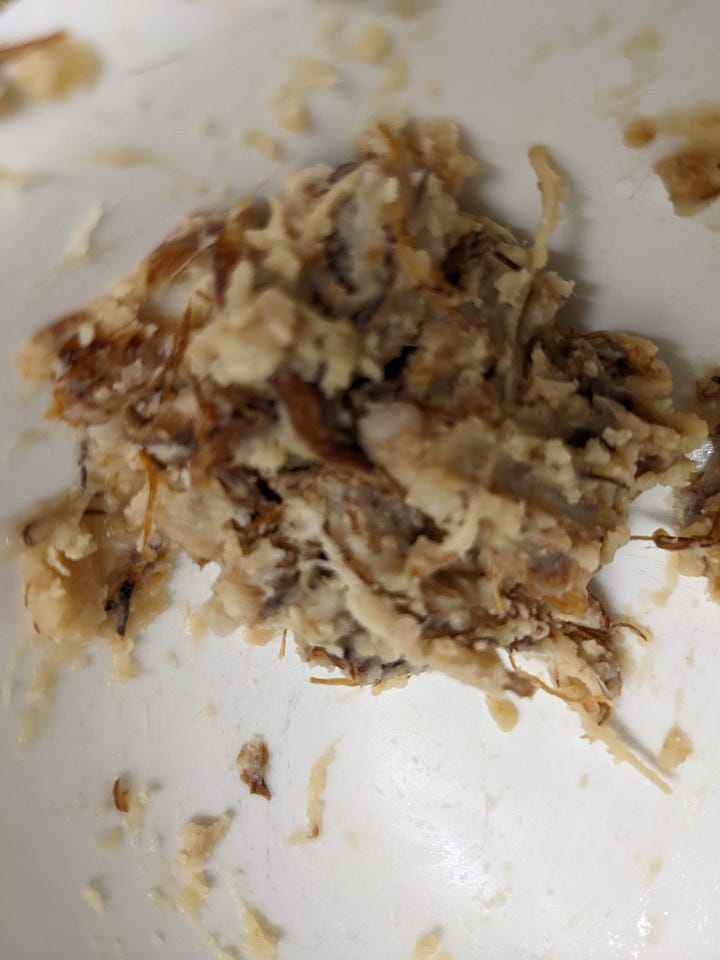
Roasting
Roasting in some oil in an oven is similar to frying, though you will need to watch out as it will burn quickly due to how thin the roots tend to be. Silverweed will likely take well to those “one tray roasts” with various meats like chicken for example, soaking up all the lovely juices. If anything, you can achieve a crispier bar snack in the oven.
Leftovers (Remarks)
My partner did a taste test and thought the cooked samples to be “pretty nice”. This is important to me as I’ve spent so long dwelling on this little root that I sometimes fear I’ve lost all perspective!
The worst part about cooking silverweed are the fibrous, hairy roots. These need attention to remove and I wasn’t always so. There must be a “knack” to it, like cleaning Jerusalem artichoke tubers, that I have not discovered yet. Imagine what culinary treats we could achieve if these roots are the thickness of your domestic carrot.
Dreams aside, my next post will likely cover real world silverweed recipes from real world cultures, rather than my culinary baby steps.
Until next time.




